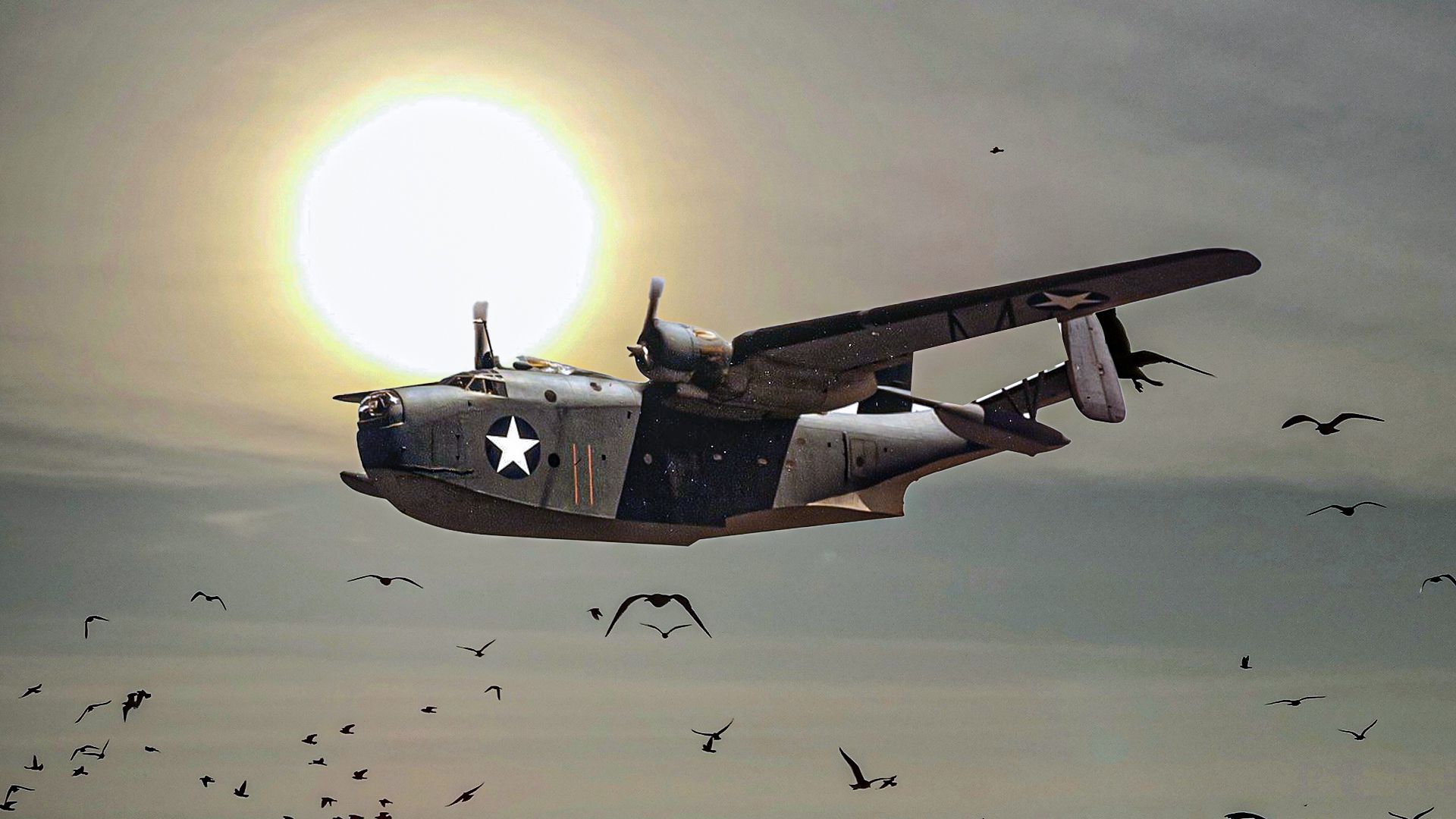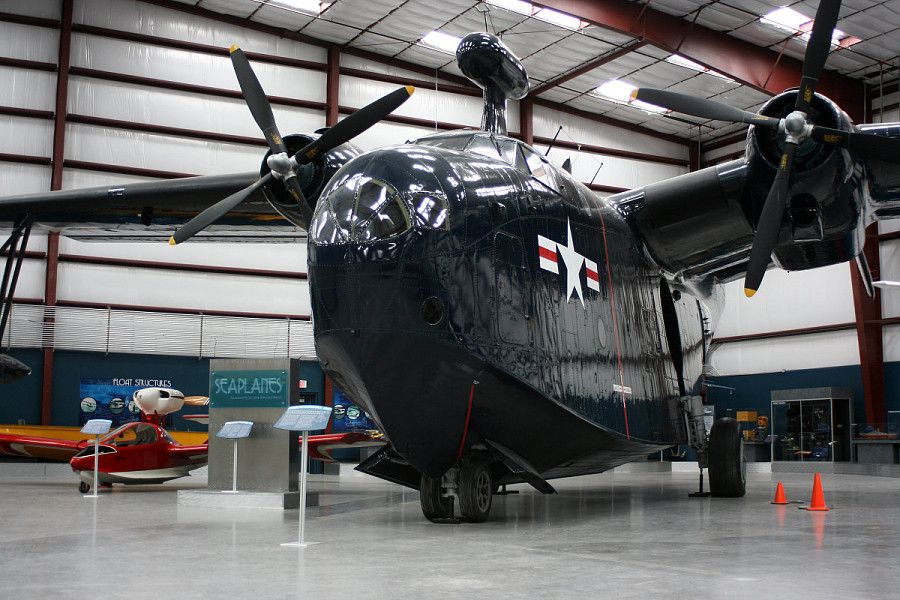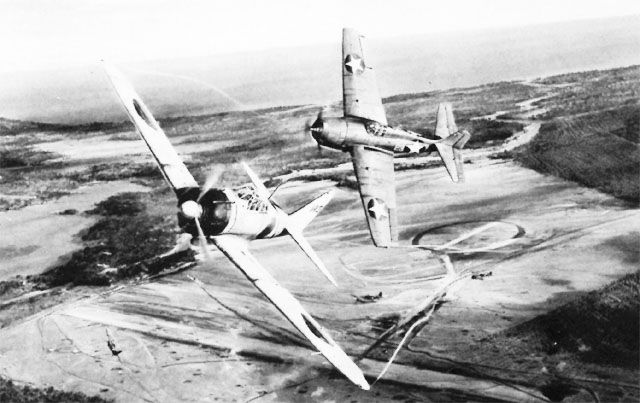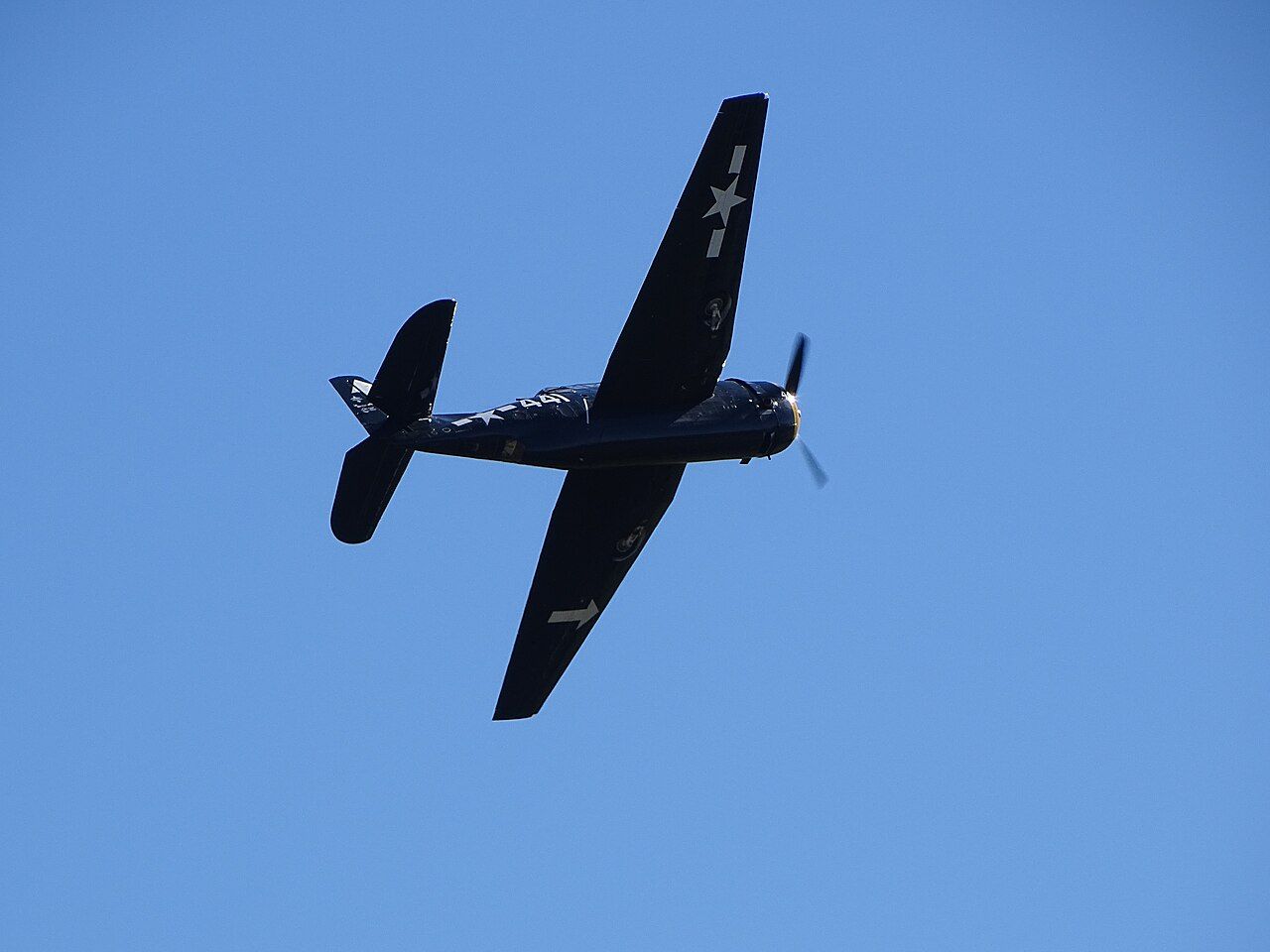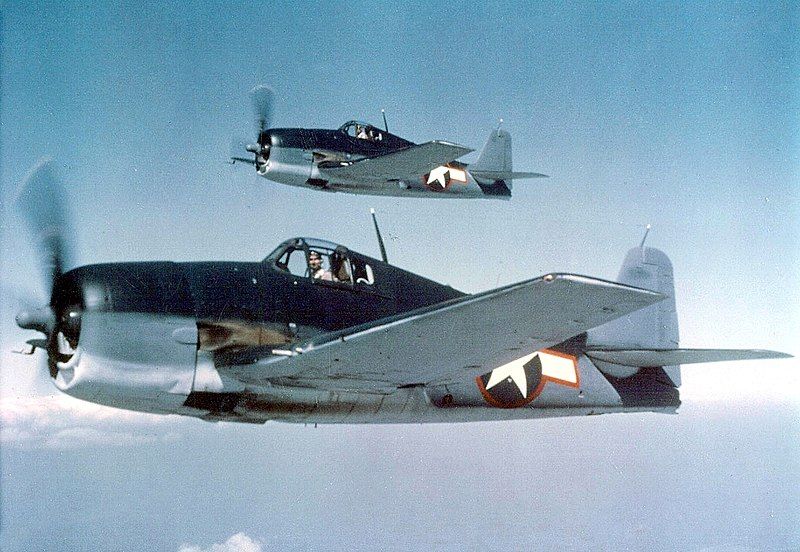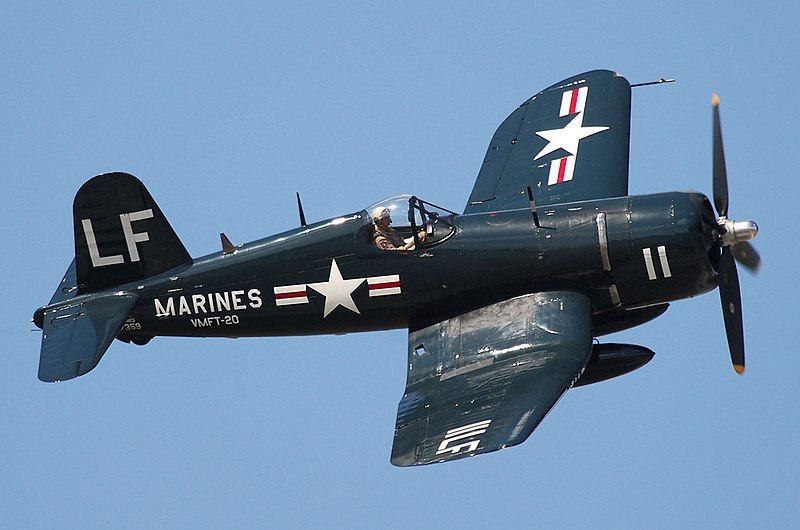Summary
- Martin Mariner: Multi-role flying boat operated by the US Navy, served before WWII, with 1,366 produced.
- Grumman Wildcat: A single-engine carrier-based fighter used in the Pacific Theater, with nearly 7,900 fighters produced.
- Grumman Avenger: Widely-used single-engine torpedo bomber credited for sinking enemy ships, with 9,839 produced.
While the United States entered the Second World War later than several other nations, its air and naval forces made their mark with abundant aircraft, weaponry, and manpower. This article notes some of the most prominent carrier-based aircraft the United States Navy used during World War II.
5
Martin PBM Mariner
Number produced: 1,366
- Crew: Seven
- Gross weight: 56,000 lb (25,425 kg)
- Maximum speed: 178 kn (205 mph, 330 km/h)
- Range: 2,600 NM (3,000 mi, 4,800 km)
- Guns: 8 × .50 in (12.7 mm) M2 Browning machine guns (two each in nose, dorsal, and tail turrets, one each in blisters amidships)
- Bombs: 4,000 lb (1,800 kg) of bombs or depth charges or 2 × Mark 13 torpedoes
The Martin PBM Mariner is a twin-engine flying boat bomber designed and developed by Glenn L. Martin Company in the late 1930s. Designed to serve in World War II, the aircraft complement the Consolidated PBY Catalina and PB2Y Coronado.
Photo: National Air and Space Museum
Powered by two Wright R-2600-6 14-cylinder radial engines, each generating 1,600 horsepower (1,194 kW), the aircraft had a range of 2,600 NM. The aircraft entered service in September 1940, before the US entered into WWII. The US Navy largely operated its Mariner fleet for neutrality patrols in the Atlantic.
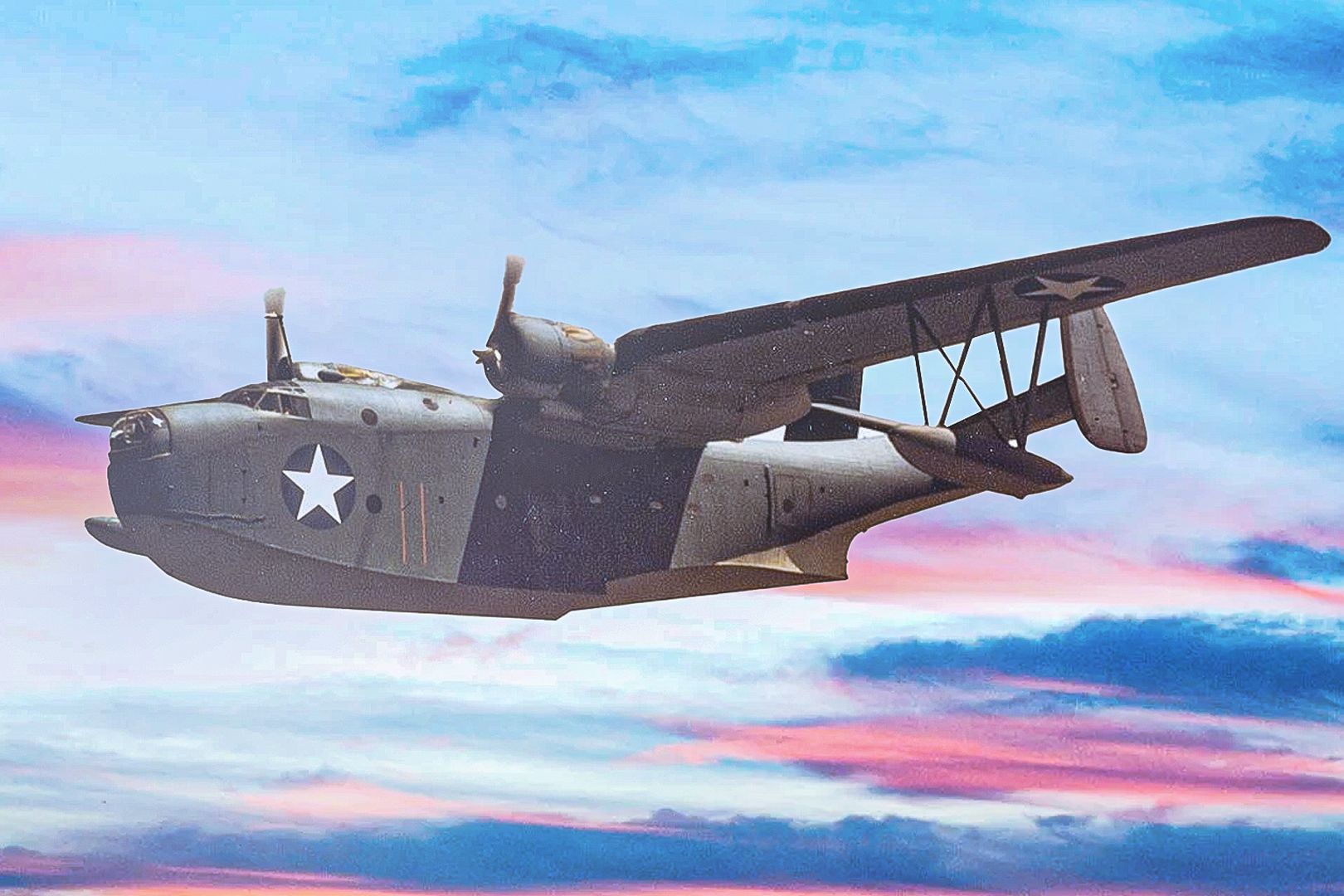
Related
Mystery Of Flight 19: The US Navy Martin PBM Mariner Lost In The Bermuda Triangle
Pity the poor PBM, Not only is the Mariner’s America’s forgotten flying boat of WWII, it’s also the forgotten plane of the Bermuda Triangle.
The type was also used for anti-submarine patrols after Japan attacked Pearl Harbor, whereby these became responsible for sinking ten U-boats during the Second World War. The manufacturer produced 1,366 PBMs between 1940 and 1949, making it one of the most noted carrier aircraft for the US Navy.
4
Grumman F4F Wildcat
Number produced: 7,885
- Crew: One
- Gross weight: 7,423 lb (3,367 kg)
- Maximum speed: 331 mph (533 km/h, 288 kn)
- Range: 845 mi (1,360 km, 734 NM)
- Guns: 4 × 0.50 in (12.7 mm) AN/M2 Browning machine guns with 450 rounds per gun
- Bombs: 2 × 100 lb (45.4 kg) bombs and/or 2 × 58 US gal (48 imp gal; 220 L) drop tanks
The Grumman F4F Wildcat is a single-engine carrier-based fighter designed and developed by Grumman in the late 1930s. Entering service with the US Navy in 1940, the aircraft primarily served the Pacific Theater during the initial years of the Second World War.
Powered by a single Pratt & Whitney R-1830-76 14-cylinder air-cooled radial piston engine producing 1,200 horsepower (890 kW), the aircraft had a range of 734 NM. While the Wildcat claimed a kill-to-loss ratio of 6:1 in 1942 and 7:1 for the entire war, its capabilities proved inferior to the Japanese Mitsubishi A6M Zero, particularly in the Coral Sea and Midway battles.
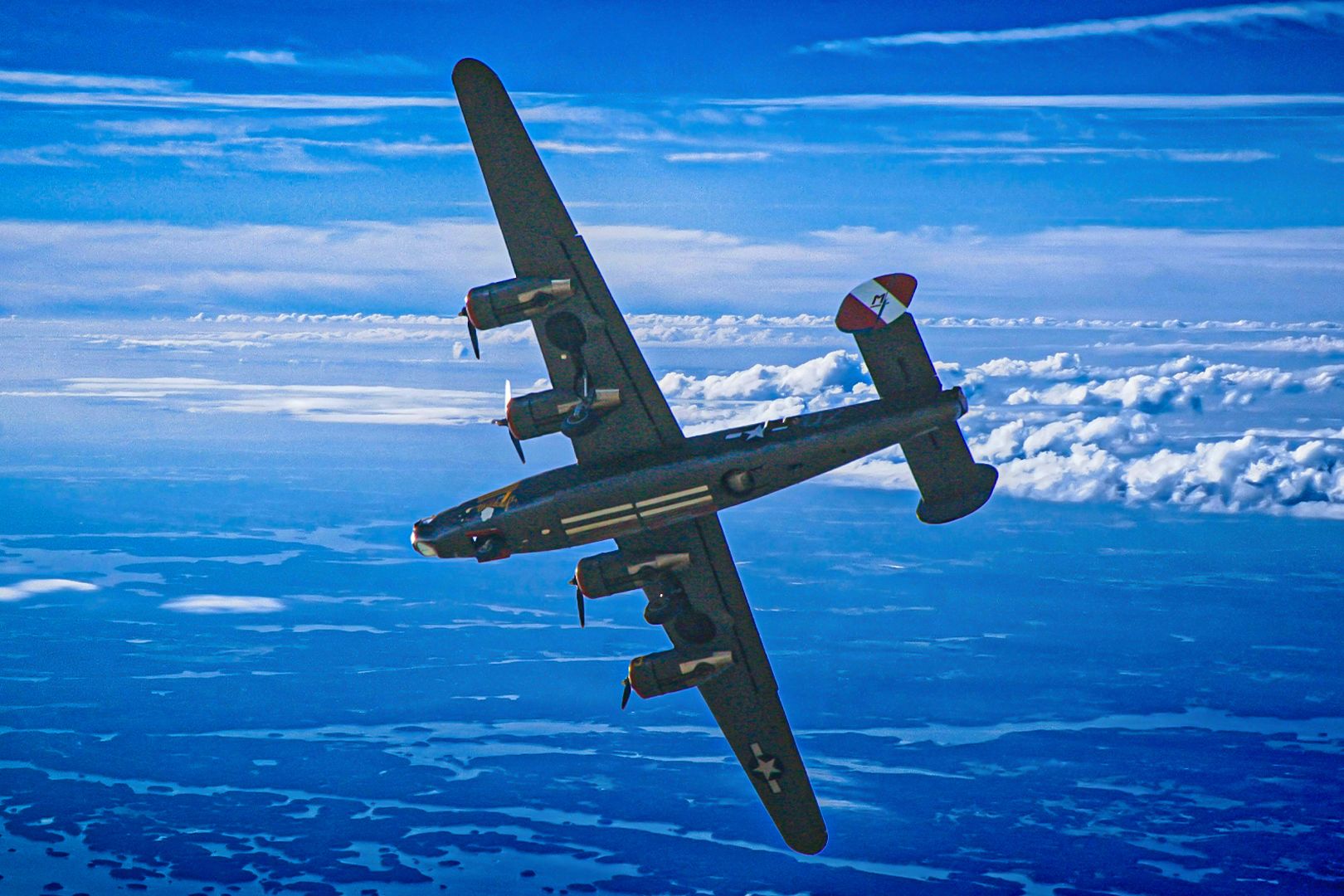
Related
Top 5: The Longest-Range Aircraft Of WWII
Did you know that there was a WWII aircraft that could cover distances of up to 9,700 nautical miles?
The manufacturer produced nearly 7,900 examples of the Wildcat between 1937 and 1943.
3
Grumman TBF Avenger
Number produced: 9,839
- Crew: Three
- Gross weight: 15,536 lb (7,047 kg)
- Maximum speed: 278 mph (447 km/h, 242 kn)
- Range: 905 mi (1,456 km, 786 NM) at cruise speed
- Guns: 1 × 0.30 in (7.62 mm) nose-mounted M1919 Browning machine gun (on early models) or 2 × 0.50 in (12.7 mm) wing-mounted M2 Browning machine guns; 1 × 0.50 in (12.7 mm) dorsal-mounted M2 Browning machine gun; 1 × 0.30 in (7.62 mm) ventral-mounted M1919 Browning machine gun
- Rockets: up to eight 3.5-Inch (89 mm) Forward Firing Aircraft Rockets, 5-inch (127 mm) Forward Firing Aircraft Rockets or High-Velocity Aerial Rockets
- Bombs: Up to 2,000 lb (907 kg) of bombs or 1 × 2,000 lb (907 kg) Mark 13 torpedo or Mark 24 mine (Fido) acoustic homing torpedo
The Grumman TBF Avenger is a single-engine torpedo bomber designed and developed by Grumman in the late 1930s. While the aircraft was initially developed for the US Navy and Marine Corps, it was later operated by several naval forces worldwide.
Powered by a single Wright R-2600-8 Twin Cyclone14-cylinder air-cooled radial piston engine generating 1,700 horsepower (1,300 kW), the aircraft had a range of 786 NM. The aircraft entered US service in 1942, seeing its first action during the Battle of Midway. It became the most widely used torpedo bomber of WWII.
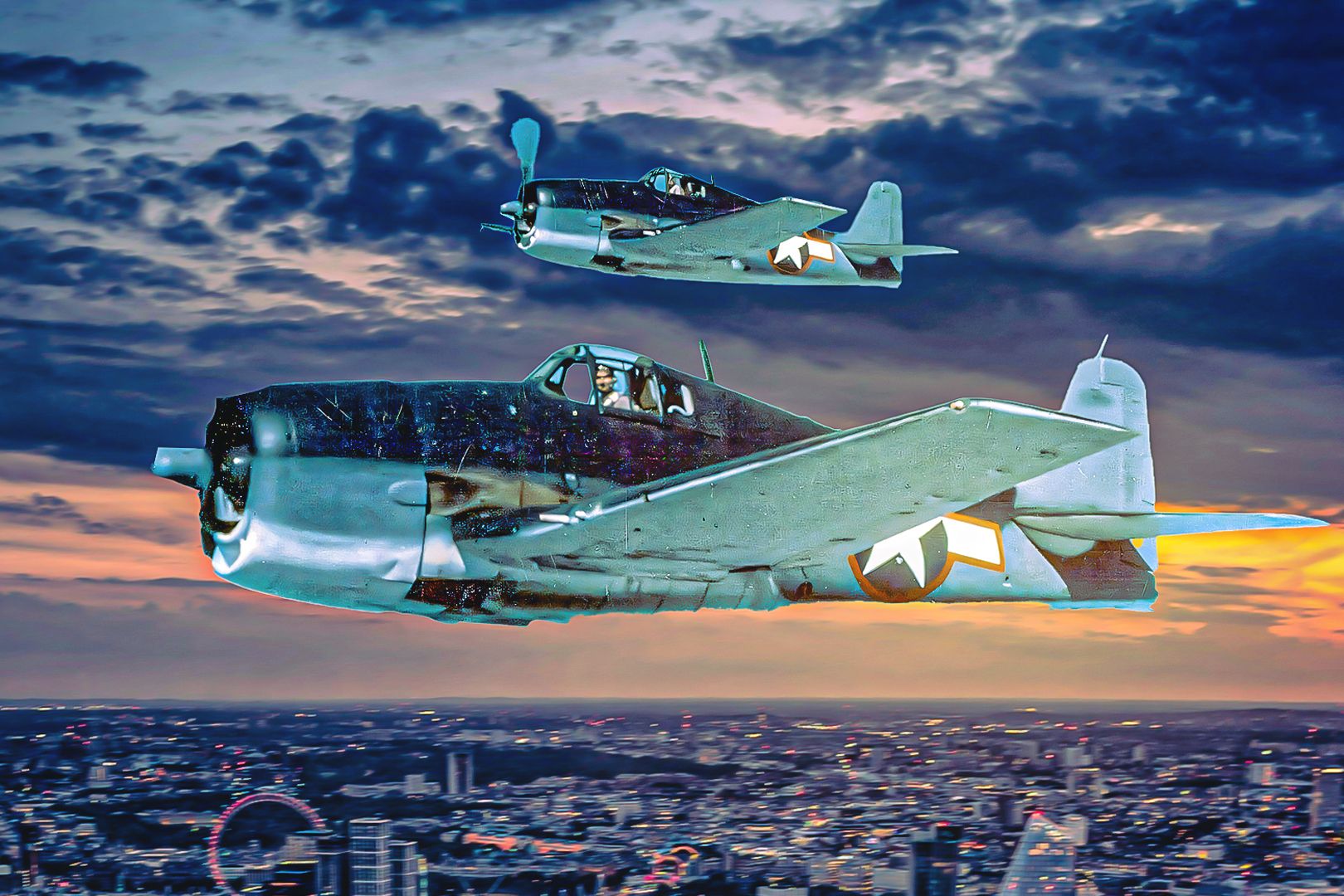
Related
History: Grumman F6F-3 Fighters In “The Great Marianas Turkey Shoot”
The Battle of the Philippines Sea was nicknamed “The Great Marianas Turkey Shoot.” The primary turkey hunter was the F6F Hellcat.
The TBF was credited with sinking the Yamato and Musashi, two super-battleships, along with 30 other submarines. Grumman produced 9,839 TBFs, and the type remained in service until the 1960s.
2
Grumman F6F Hellcat
Number produced: 12,275
- Crew: One
- Gross weight: 12,598 lb (5,714 kg)
- Maximum speed: 391 mph (629 km/h, 340 kn)
- Combat range: 945 mi (1,521 km, 821 NM)
- Guns: 6 × 0.50 in (12.7 mm) M2 Browning machine guns, with 400 rounds per gun or 2 × 0.79 in (20 mm) AN/M2 cannon, with 225 rounds per gun and 4 × 0.50 in (12.7 mm) Browning machine guns with 400 rounds per gun
- Bombs: up to 4,000 lb (1,800 kg) full load
- Rockets: 6 × 5 in (127 mm) HVARs or 2 × 11.75 in (298 mm) Tiny Tim unguided rockets
The Grumman F6F Hellcat is a single-engine carrier-based fighter aircraft designed and developed by Grumman in the early 1940s. The aircraft was designed to replace the F4F Wildcat and to counter the Japanese Mitsubishi A6M Zero. The aircraft was powered by a single Pratt & Whitney R-2800-10W Double Wasp 18-cylinder air-cooled radial piston engine, generating 2,200 hp (1,600 kW), and featured a combat range of 821 NM.
Entering service in 1943, the Hellcat became the dominant fighter of the US Navy in the second half of the Pacific War. Despite the superior speed of the Vought F4U Corsair, the Hellcat prevailed due to its success during critical flight phases, including carrier landings.
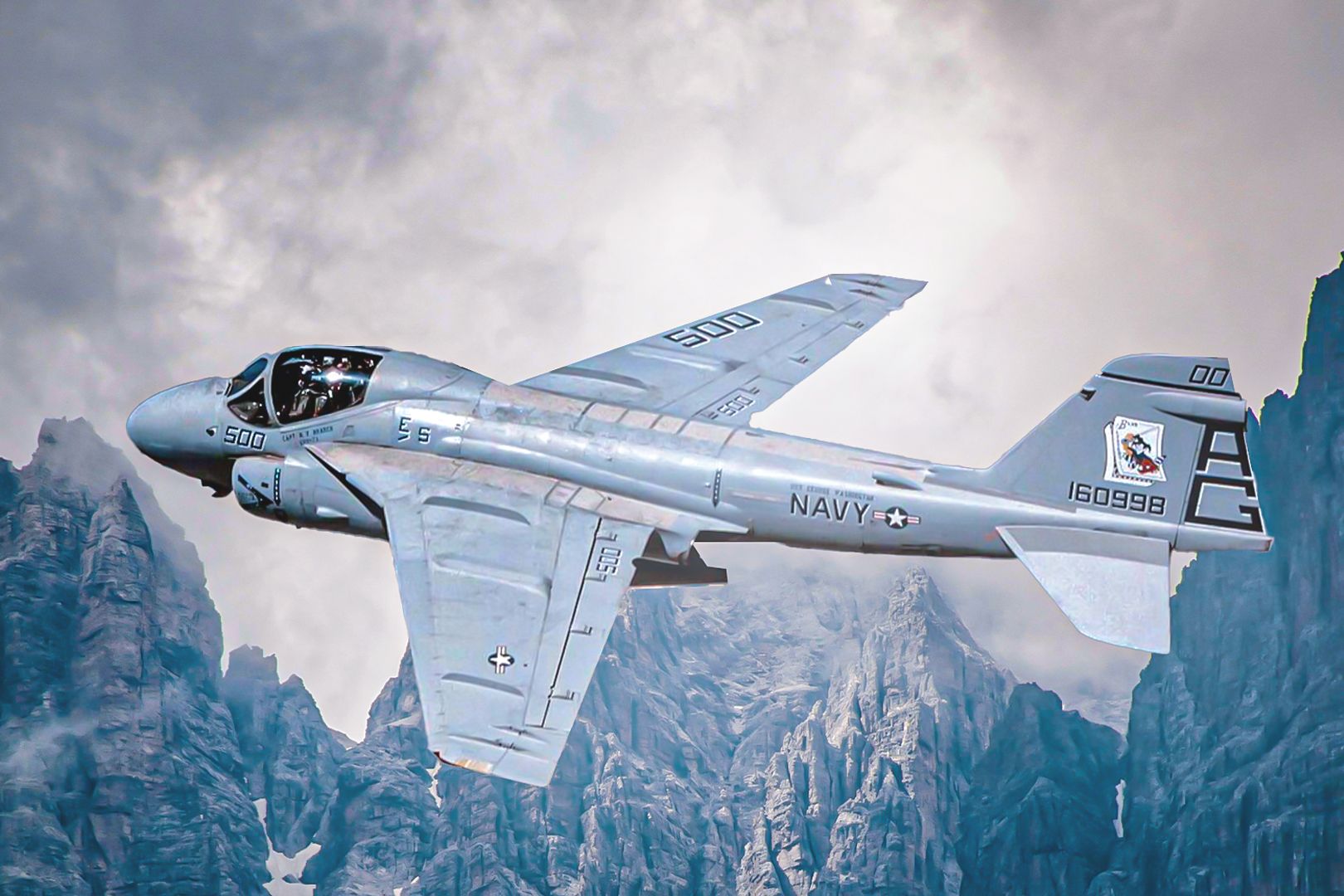
Related
How Did The Grumman A-6 Intruder Serve In US Combat Missions?
The A-6 Intruder served the USN and USMC for 30+ years and in multiple conflicts. It also inspired a bestselling novel and major motion picture.
In November 1943, the Hellcats claimed 30 Mitsubishi Zeros for losing one F6F over Tarawa and nearly 50 other Japanese aircraft, including A6M Zeros, over Rabaul, New Britain. Over 12,000 examples of the Hellcats were produced between 1942 and 1945.
1
Vought F4U Corsair
Number produced: 12,571
- Crew: One
- Gross weight: 14,670 lb (6,654 kg)
- Maximum speed: 446 mph (717 km/h, 385 kn)
- Range: 1,005 mi (1,617 km, 873 NM)
- Guns: 6 × 0.50 in (12.7 mm) M2 Browning machine guns 375-400 rounds per gun
- Rockets: 8 × 5 in (12.7 cm) high-velocity aircraft rockets and/or
- Bombs: 4,000 lb (1,800 kg)
The Vought F4U Corsair is a single-engine fighter designed and developed by Chance Vought in the early 1940s. The aircraft entered US Navy service in 1944 in large numbers to be utilized as carrier-based fighter-bombers during World War II.
Powered by a single Pratt & Whitney R-2800-18W radial engine, generating 2,380 horsepower (1,770 kW), the aircraft had a range of 873 NM. Achieving a remarkable 11:1 kill ratio against enemy aircraft, some Japanese pilots noted the Corsair as the most formidable US fighter of the Second World War.
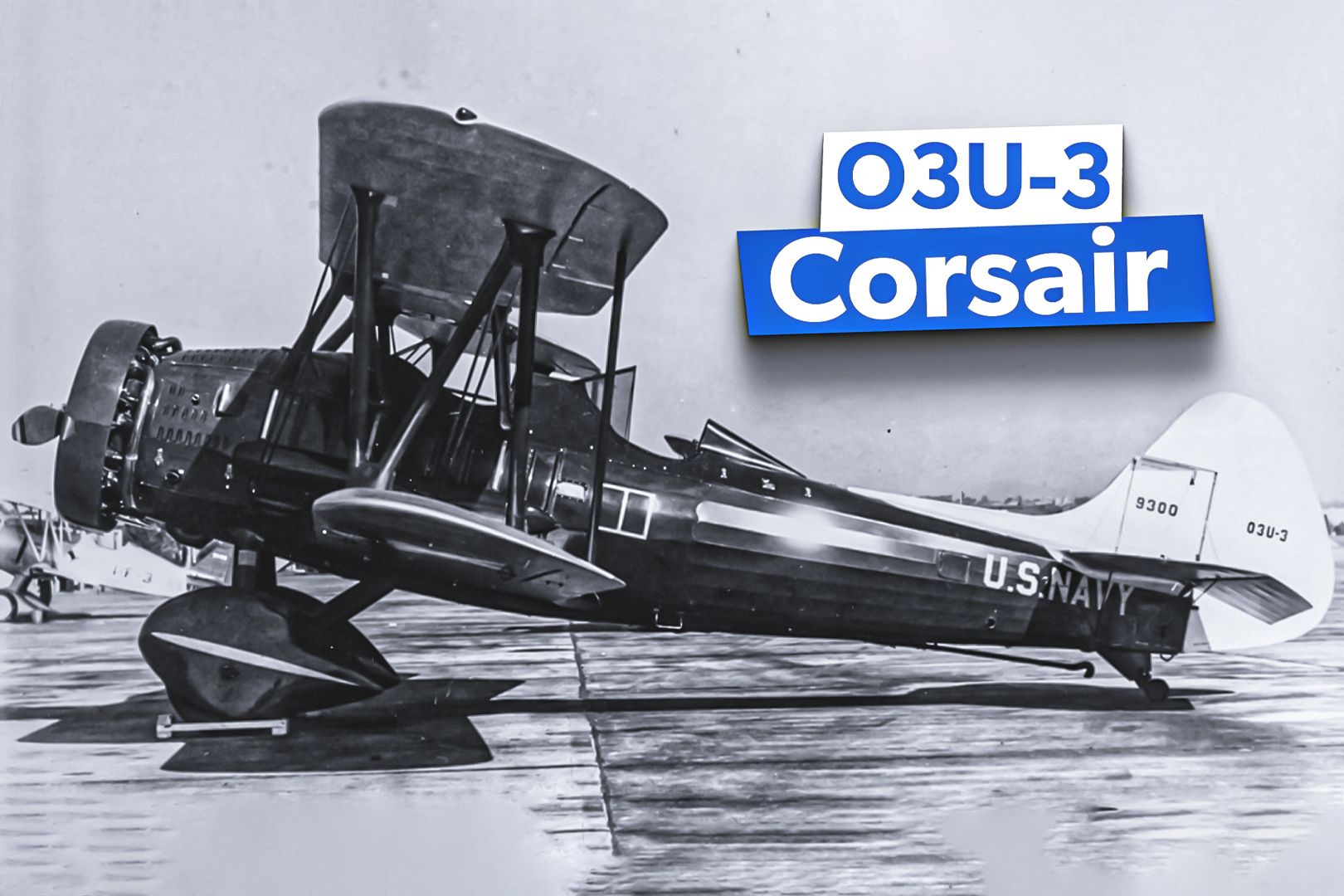
Related
Forgotten WW2 Plane: The US Navy’s Vought O2U/O3U-3 Corsair
Many history buffs remember the Vought F4U Corsair and LTV A-7 Corsair II, but what about the Vought O3U-3 Corsair?
The manufacturer produced over 12,500 Corsairs between 1942 and 1953, making the aircraft stand out after World War II, particularly during the Korean War and French colonial wars.

